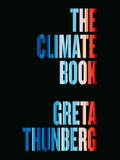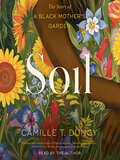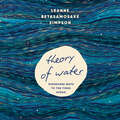Service Alert
Service Alert
En raison de la grève des employés de Postes Canada, le CAÉB a suspendu la production et l'envoi de documents papier ainsi que l'envoi des lecteurs Envoy Connect. Les options numériques ne sont pas affectées.
En raison de la grève des employés de Postes Canada, le CAÉB a suspendu la production et l'envoi de documents papier ainsi que l'envoi des lecteurs Envoy Connect. Les options numériques ne sont pas affectées.
Articles 1 à 3 sur 3

Par Greta Thunberg. 2023
We still have time to change the world. From Greta Thunberg, the world's leading climate activist, comes the essential handbook…
for making it happen. You might think it's an impossible task: secure a safe future for life on Earth, at a scale and speed never seen, against all the odds. There is hope - but only if we listen to the science before it's too late. In The Climate Book, Greta Thunberg has gathered the wisdom of over one hundred experts - geophysicists, oceanographers and meteorologists; engineers, economists and mathematicians; historians, philosophers and indigenous leaders - to equip us all with the knowledge we need to combat climate disaster. Alongside them, she shares her own stories of demonstrating and uncovering greenwashing around the world, revealing how much we have been kept in the dark. This is one of our biggest challenges, she shows, but also our greatest source of hope. Once we are given the full picture, how can we not act? And if a schoolchild's strike could ignite a global protest, what could we do collectively if we tried? We are alive at the most decisive time in the history of humanity. Together, we can do the seemingly impossible. But it has to be us, and it has to be now. * This audiobook edition includes a downloadable PDF of climate charts and trends from throughout the book
Par Camille T Dungy. 2023
A seminal work that expands how we talk about the natural world and the environment as National Book Critics Circle…
Criticism finalist Camille T. Dungy diversifies her garden to reflect her heritage. In Soil: The Story of a Black Mother ' s Garden , poet and scholar Camille T. Dungy recounts the seven-year odyssey to diversify her garden in the predominately white community of Fort Collins, Colorado. When she moved there in 2013, with her husband and daughter, the community held strict restrictions about what residents could and could not plant in their gardens. In resistance to the homogenous policies that limited the possibility and wonder that grows from the earth, Dungy employs the various plants, herbs, vegetables, and flowers she grows in her garden as metaphor and treatise for how homogeneity threatens the future of our planet, and why cultivating diverse and intersectional language in our national discourse about the environment is the best means of protecting it. Definitive and singular, Soil functions at the nexus of nature writing, environmental justice, and prose to encourage you to recognize the relationship between the peoples of the African diaspora and the land on which they live, and to understand that wherever soil rests beneath their feet is home
Par Leanne Betasamosake Simpson. 2025
Acclaimed Nishnaabeg writer Leanne Betasamosake Simpson takes a revolutionary look at that most elemental force, water, and suggests a powerful…
path for the future.For many years, Leanne Betasamosake Simpson has found refuge in skiing—in all kinds of weather across different forms of terrain, often following the trail beside a beloved creek near her home. Recently, as she skimmed along this path and meditated on our world's uncertainty—including environmental devastation, the rise of authoritarianism, and the effects of ongoing social injustice—her mind turned to the ice beside her, and the snow beneath her feet. And she asked herself: What might it mean to truly listen to water? To know not only the land on which we live, but the water that surrounds and inhabits us? To coexist with and alongside water? So begins this renowned writer's quest to discover, understand, and trace the historical and cultural interactions of Indigenous peoples with water in all its forms. On her journey, she reflects on the teachings, traditions, stories, and creative work of others in her community—particularly those of her longtime friend Doug Williams, an Elder whose presence suffuses these pages; reads deeply the words of thinkers from other communities whose writing expands her own; and begins to shape a "Theory of Water" that reimagines relationships among all beings and life-forces. In this essential and inventive work, Simpson artfully weaves Nishnaabeg stories with her own thought and lived experience—and offers a vision of water as a catalyst for transformation, today and into our shared future.